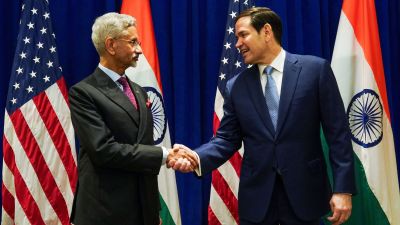And Now, Justice for All
...

It was the kind of shock 42-year-old Anand Singh, a junior court attendant at the Supreme Court, wasn’t prepared to confront. He lost his wife Gobindi Rawat after she fell from a moving bus in November 2001. But even while his three children were grieving for their mother, Singh was sure of one thing: he didn’t want Gobindi’s death to go waste. In plain speak, he wanted justice.
“My income did not permit me to hire a lawyer and file a suit for compensation. And stories of people struggling for years to get justice discouraged me,” says Singh. Finally, on the advice of fellow peons, he approached the Delhi Legal Services Authority for free legal aid. “The DLSA asked me to file my claim and within two months my application was set for a hearing. On the first date itself, the insurance company was summoned and a compen-sation of Rs 1, 75,000 was granted to me. Had I not exer-cised this option and gone to the court the normal way, the case would have still been pending, with the advocate eyeing a per-centage of the compensation and his fee,” recalls Singh.
Singh is among the count-less who’ve been granted relief by the free legal services pro-gramme run all over the country by the state legal services authorities. A mitzvah to the nation by virtue of Article 39 A of the Constitution: it clearly pro-vides that the “State shall secure, that the operation of the legal system promotes justice on a basis of equal opportunity, and shall in particular, provide free legal aid by suitable legislation or schemes or any other way to ensure that opportunities for securing justice are not denied to any citizen by reason of eco-nomic or other disabilities.” The National Legal Services Authority (NALSA) was consti-tuted about a decade back, under the executive chairmanship of Justice A.S. Anand and became completely functional in 1998.
Any aggrieved Indian who is a SC/ST, victim of human traffick-ing, an affected woman or a child, mentally ill or disabled, victim of mass disaster, ethnic violence, caste atrocity, flood, drought, earthquake or industri-al disaster, someone in custody; including custody of a protective or juvenile home, someone whose income does not exceed Rs 50,000 is eligible to knock at the doors of NALSA or the respective state legal services authority for free legal aid.
One heartening aspect of the service is that about 1.2 crore cases had been amicably settled and 72,038 Lok Adalats were held all over the country by mid-2000. Only recently, in September 2005, Justice Y. K. Sabharwal, the Chief Justice of India, and the then executive chairman of NALSA, launched a unique mobile legal aid service on boats and steamers in the swampy char areas of Sund-erban for the arsenic-infected population, who were also plagued with banes such as girl trafficking and child marriages.
|
By 2000, 12 million cases had been settled under the right to free legal assistance.
|
The initiative saw the inaccessi-ble villagers being empowered for the first time, after five decades of independence. One thing is certain: as long as we have access to jus-tice through bodies like NALSA and free legal aid as per Article 39A, there is some hope of jus-tice for all. SOURAV ROY in New Delhi
Photos


- 01
- 02
- 03
- 04
- 05





























